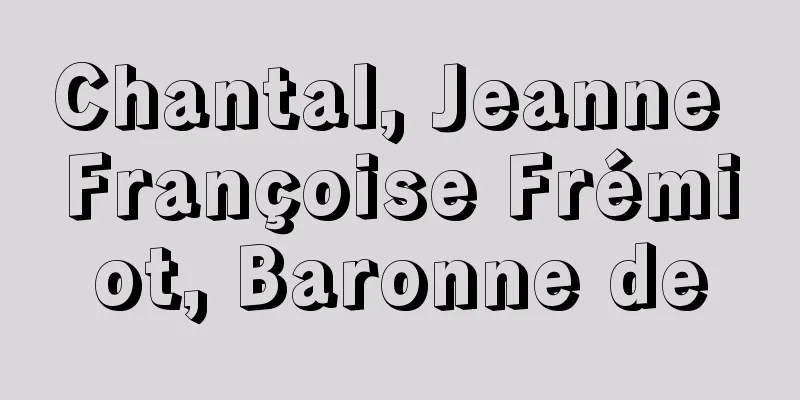Yes - Yes (English spelling)

|
A British rock group. Yes, along with King Crimson, Pink Floyd, Emerson, Lake & Palmer, and Genesis, were one of the most commercially successful bands in the progressive rock scene of the 1970s, and are highly regarded as artists. In particular, Yes stood out in terms of their intricate compositional skills, which connected various phrases like a mosaic to create grandiose and flawless songs, their refreshing chorus work, which is rare in progressive rock, and the sense of speed and dynamism of the ensemble, which made full use of their outstanding performance techniques. In 1968, Jon Anderson (1944-), a member of bands such as The Warriors and Gun and a solo singer, and Chris Squire (1948-2015), a bassist who led a band called Mabel Greer's Toyshop, met and started Yes. The other original members were Peter Banks (1947-2013), who was the guitarist of Mabel Greer's Toyshop, Tony Kaye (1946-), keyboardist, and Bill Bruford (1948-), drummer. In 1969, they signed with Atlantic Records in the US, and released their debut single "Sweetness/Something Coming" in the same year, followed by Yes' First Album. Their performance was still rough, but the sound was unique, as they had intended at the time to "add the heavy sound of Cream to the chorus of The 5th Dimension." The second album, Time and Words: The World of Yes, Vol. 2, released by the same members in 1970, used a live orchestra and the arrangements were somewhat more complex, but it basically followed the same line as the previous album. Following Banks' departure shortly after the release of their second album, guitarist Steve Howe (1947-), who had been active in Tomorrow and other bands, joined the band. Their third album, released in 1971, marked a turning point in their career, as the character of Yes as a "progressive rock band" became clearer in terms of the composition of the songs and the intricacy of the arrangements, and it was their first hit to reach the top 40 in the US. Furthermore, following Kaye's departure, former Stroubs keyboardist Rick Wakeman (1949-) joined the band. Wakeman's arrival, coming from a classical background, gave the ensemble a sense of weight and scale. With the addition of Howe's guitar, which uses a wide range of techniques from classical to flamenco, and Wakeman's keyboards, which have a dignified sound, Yes entered their golden age with the release of "Fragile" (1971) and "Close Call" (1972), which are considered their greatest works. In particular, the latter, which is composed of grandiose pieces in suite form and has abstract but positive lyrics, has been referred to in various places as a masterpiece that represents progressive rock. After a series of epic albums filled with grandiose, intricate songs, such as Tales from Topographical Oceans (1973), which was made with Alan White (1949- ), replacing Bruford, who had left the band to join King Crimson, and Relayer (1974), which was made with Patrick Moraz (1944- ), replacing Wakeman, Wakeman returned to the band for 1977's Ultimate, which reflected the decline of the progressive rock scene and the rise of punk, and showed the band breaking new ground by moving from their previous concept-oriented production to a compact, straightforward sound. That line was pursued further on 1978's Thomato, but 1980's Drama was made without Anderson and Wakeman, and included Trevor Horn (1949-) and Geoff Downes (1952-) of the techno-pop unit The Buggles. The band finally disbanded in 1981. However, in 1982, Anderson returned and the band reformed, with Trevor Rabin (1954-), a new member of the band who played guitar, keyboards, and vocals, at the core of their sound. In 1983, they released 90125. This clear album, which made full use of emulators (sampling keyboards) and put hard rock simplicity at the forefront, was quite a departure from the traditional image of Yes, but it matched the atmosphere of the 1980s perfectly, and sales reached their highest level ever. The single "Lonely Hearts" also reached number one in the US for the first time. The follow-up album, Big Generator, released in 1987, showed Rabin's leadership even more, and was simpler and more hard rock-like. Since then, Yes has continued to perform through a rapid succession of member changes and breakups (they even split into two groups and even fought over the band name Yes), and in 2001 they released Magnification with Anderson, Squire, Howe and White as the band's four members. [Shinya Matsuyama] [References] | | | |Source: Shogakukan Encyclopedia Nipponica About Encyclopedia Nipponica Information | Legend |
|
イギリスのロック・グループ。イエスは、キング・クリムゾン、ピンク・フロイド、エマーソン・レーク&パーマー、ジェネシスなどと並び、1970年代のプログレッシブ・ロック・シーンで、商業的にもっとも成功したバンドの一つであり、アーティストとしての評価も高い。とくに、さまざまなフレーズをモザイク状につなぎあわせて、壮大かつ隙(すき)のない楽曲に仕上げてゆく緻密(ちみつ)な構成力、プログレッシブ・ロックには珍しいさわやかなコーラス・ワーク、そして卓越した演奏技術を駆使したアンサンブルの疾走感と躍動感といった点において、イエスは一頭地を抜く存在だった。 1968年、ウォリアーズやガンなどのバンドのメンバー、ソロ・シンガーとして活動していたジョン・アンダーソンJon Anderson(1944― )、メイベル・グリーアズ・トイショップというバンドを率いていたベーシストのクリス・スクワイアーChris Squire(1948―2015)が出会い、2人を核にイエスがスタートした。2人以外の当初のメンバーは、メイベル・グリーアズ・トイショップのギタリストだったピーター・バンクスPeter Banks(1947―2013)、キーボードのトニー・ケイTony Kaye(1946― )、ドラムのビル・ブルフォードBill Bruford(1948― )の5人だった。 1969年アメリカのアトランティックと契約を結び、同年にデビュー・シングル「スウィートネス/サムシング・カミング」、続いて『イエス・ファースト・アルバム』を発表。演奏はまだ荒削りだが、「クリームのヘビー・サウンドにフィフス・ディメンションのコーラスを加えたもの」という当時の本人たちのもくろみどおり、ユニークなサウンドになっていた。同じメンバーによる1970年リリースの2作目『時間と言葉・イエスの世界第2集』では、生オーケストラを用い、アレンジが多少複雑になっているが、基本的には前作の路線を踏襲していた。 セカンド・アルバム・リリース直後のバンクスの脱退を受けて、トゥモロウほかのバンドで活動してきたギタリストのスティーブ・ハウSteve Howe(1947― )が加入。そして1971年に出た『サード・アルバム』は、組曲構成やアレンジの緻密さなどの点で、「プログレッシブ・ロック・バンド」イエスのキャラクターが明瞭(めいりょう)になった、彼らのキャリアにおける分岐点ともいうべき作品で、初めて全米トップ40に入るヒットを記録。さらにケイの脱退を受けて、元ストロウブズのキーボード奏者リック・ウェークマンRick Wakeman(1949― )が新たに加入。クラシック畑出身のウェークマンの加入は、アンサンブルに重厚さとスケール感を付与することとなった。クラシックからフラメンコまで多彩なテクニックを駆使するハウのギター、そして格調高い響きをもったウェークマンのキーボードが加わり、いよいよ黄金時代を迎えたイエスが発表した『こわれもの』(1971)、『危機』(1972)は彼らの最高傑作とされる。とくに、組曲形式の壮大な大曲で構成され、抽象的だがポジティブな歌詞をもつ後者は、プログレッシブ・ロックを代表する名盤としてさまざまな場で言及されてきた。 キング・クリムゾンに参加するために脱退したブルフォードにかわりアラン・ホワイトAlan White(1949― )が入って制作された『海洋地形学の物語』(1973)、ウェークマンが抜けてパトリック・モラーツPatrick Moraz(1944― )が入った『リレイヤー』(1974)と、壮大かつ緻密な曲ばかりで占められた大作が続いた後、ふたたびウェークマンが復帰した1977年の『究極』では、プログレッシブ・ロック・シーンの衰退とパンクの台頭を反映して、それまでのコンセプト重視のつくりからコンパクトでストレートなサウンドへと変化し、新境地をみせた。その路線は1978年の『トーマト』でさらに追求されたが、1980年の『ドラマ』はアンダーソンとウェークマンを除いた3人に、テクノ・ポップ・ユニット、バグルズのトレバー・ホーンTrevor Horn(1949― )とジェフ・ダウンズGeoff Downes(1952― )を加えて制作された。そして1981年にはついに解散となった。 しかし1982年、アンダーソンが復帰して再結成され、ギター、キーボード、ボーカルほかをこなす新加入のマルチプレイヤー、トレバー・ラビンTrevor Rabin(1954― )を音づくりの要(かなめ)に据え、1983年に『90125』を発表。イミュレーター(サンプリング・キーボード)を駆使し、ハード・ロック的シンプルさを前面に出したこの明快なアルバムは、従来のイエスのイメージからはかなり逸脱するものだったが、1980年代の空気にみごとにマッチしてセールス的には過去最高を記録、シングル・カットされた「ロンリー・ハート」も初の全米1位を獲得した。続く1987年の『ビッグ・ジェネレイター』は、ラビンがますますリーダーシップを発揮し、シンプルでハード・ロック色の強いものとなっている。 これ以降イエスはめまぐるしいメンバーの交替、離合集散を繰り返しながら(二つに分裂し、イエスというバンド名をめぐって争ったこともあった)活動を続け、2001年にはアンダーソン、スクワイアー、ハウ、ホワイトの4人で『マグニフィケイション』を発表している。 [松山晋也] [参照項目] | | | |出典 小学館 日本大百科全書(ニッポニカ)日本大百科全書(ニッポニカ)について 情報 | 凡例 |
<<: ESR - ESR (English spelling) electron spin resonance
Recommend
General insured person - Ippan Hihokensha
...Insured persons are classified into general, c...
Tunic - tunic (English spelling)
It is used in a broad sense with various concepts...
External standard taxation - external standard taxation
Taxation is based on a tax base that is relativel...
Spring Festival
A festival held in the spring. Festivals with thi...
Toyo Yamawaki
Year of death: August 8, 1762 (September 25, 1762)...
Painting praise - Gasan
It can be written as 'gasan', 'gasan&...
Hakkārī (English spelling)
...The first is the Zaza dialect, spoken in the a...
Akikage Uesugi
...A feudal lord in the Azuchi-Momoyama and early...
Kujo Shokoku
…His book, Taikai Hisho, is a political opinion b...
Potato moth - Brachmia triannulella
An insect of the Lepidoptera family Gelechiidae. A...
Superstructure - Überbau (English) German
From the standpoint of historical materialism (Ma...
Protomyces
A genus in the order Protomycetales, class Hemispo...
ḥadīqa (English spelling) hadiqa
… [Tanaka Awa] [Islam] In the Islamic world, the ...
Automobile Liability Compensation Security Law - jidoushasongaibaishoshoho
Abbreviated as the Automobile Liability Law. This...
Tachibori River
…He served as the head elder of the Minami group....









